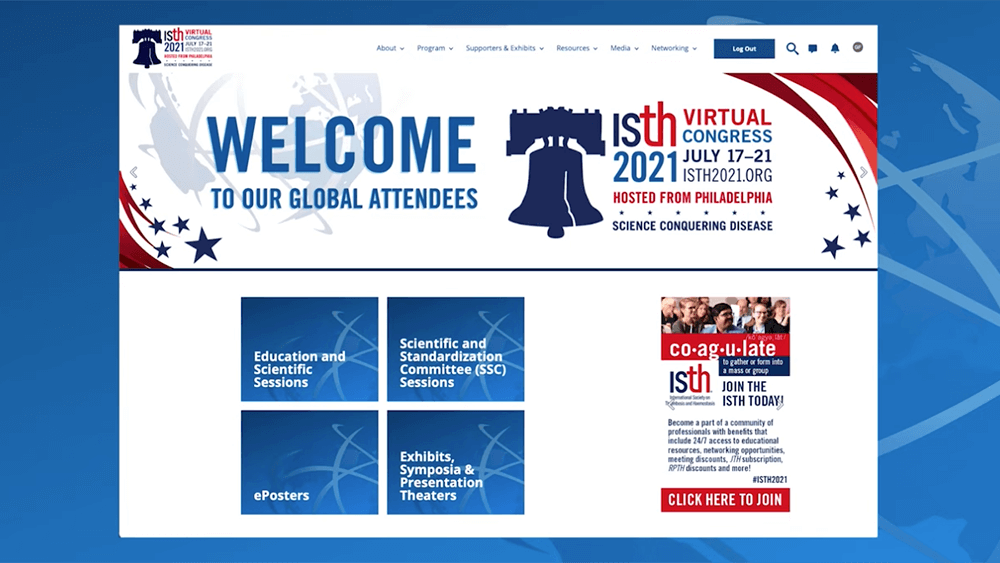
The 2021 International Society on Thrombosis and Haemostasis (ISTH) annual congress was all virtual and hosted from Philadelphia.
In March 2020, the International Society on Thrombosis and Haemostasis (ISTH) announced that its annual congress, set to take place in Milan in July, would be moving to a virtual format. “That really did not afford us a lot of time to make that transition,” Lisa Astorga, ISTH’s director of meetings, told Convene at the time. “That gave us a few months to really try to pull it together and make some decisions quickly on what that virtual event was going to look like.” Unfortunately, COVID-19 gave them “no other choice,” she said. “The decision was almost made for us, right?”
The organization settled on a simulive event that was complimentary for attendees. Approximately 18,000 attendees registered and the event hosted 12,500 unique users. “The largest [in-person] congress we’ve had is about 10,000 attendees,” Astorga said. “So even to have 12,000 people, that was great for us.”

Lisa Astorga
In 2021, ISTH decided to take the simulive virtual congress approach once more, but with more time to plan the event, Astorga said it was decided they would charge a “relatively small fee” — between 10 to 15 percent of ISTH’s typical face-to-face registration cost.
For ISTH’s first virtual outing in 2020, “attendees were very forgiving,” Astorga said. But after a year of virtual events, she said, “everybody is upping their game, so we had to do that. In 2020, we reduced our content significantly from what we would have had at the face-to-face [meeting]. For 2021, because we were already in the midst of planning a hybrid and had to transition again to virtual, we kept the same amount of content; it was probably almost double the amount of content from 2020.”
After hosting the back-to-back virtual events, ISTH looked at the data from the 12,500 unique users who participated in 2020 to see “how many of those users had come to an ISTH conference before,” Astorga said, analyzing reliable conference attendee data dating back to 2015. The 2020 virtual event hosted roughly 1,750 new attendees. Of those new attendees, 472 returned to the 2021 event, which had approximately 7,500 participants in total.
“That in itself is where we usually land, on an average,” Astorga said. “Some years we’ll be 9,500, depending on location, but 7,500 is our average, so that was good to see that number. That’s probably our sweet spot of ISTH. In terms of goals, we were extremely happy as the number of registrants was almost exactly what we targeted.”
According to Astorga, ISTH finds the data valuable for future conference planning. “We’re excited to have all this information and analytics to help us move things forward. Because this was all stuff we were talking about before the pandemic. We talked about having a digital component, and then how were we going to measure success. I would say that the one thing that the pandemic did, is it kind of forced us into looking at all of this. It’s pretty exciting, to be honest with you. I mean, you have to have a silver lining somewhere.”
Astorga shared that ISTH is especially curious to see how this data will help the organization in measuring success for its 2022 event, which at present ISTH plans to conduct as a hybrid meeting.
“How many people will come back again? How many of them really just want to get back to face-to-face? And then, what is that going to look like for our virtual delegates,” Astorga said, and “what is the ROI on that? It’s really good stuff to sink your teeth into.”
Casey Gale is associate editor at Convene.
